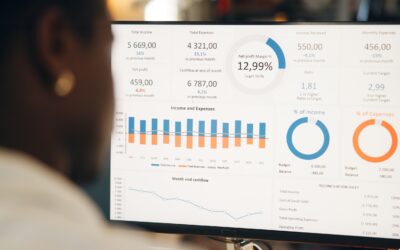The Secret Weapon Hiding in Your Donor Data
Most nonprofits think donor retention is a mystery. Donors give once, disappear, and everyone shrugs like it’s inevitable. But the truth? You already have the answer buried in your data. It’s called donor cohort analysis—and it’s the tool that separates reactive fundraising from strategic growth.
When used right, cohort analysis reveals patterns that are invisible on the surface. It helps you see which donors stay, which vanish, and—more importantly—why. This isn’t about spreadsheets. It’s about storytelling through numbers.
What Donor Cohort Analysis Actually Means
In plain English, a cohort is just a group of people who share something in common. Maybe they all gave for the first time in January. Or all joined through your spring gala. Or all donated through a peer-to-peer campaign.
Cohort analysis looks at how each group behaves over time. Do January donors keep giving longer than July donors? Do event donors become recurring givers, or do they ghost after the big night? Once you see the trends, you can start predicting behavior and fixing leaks in your funnel.
Think of it like running a restaurant. You’re not just tracking sales—you’re noticing which nights bring loyal regulars versus one-time visitors. The same logic applies to donors.
Why Cohorts Beat Averages Every Time
Averages lie. If your overall retention rate is 40%, that number hides everything important. You might have one group retaining at 70% and another tanking at 10%. Averages make you feel stable while your foundation quietly crumbles.
Cohort analysis breaks those illusions. It slices your donor base into time-bound segments and exposes what’s really working. You can spot your strongest acquisition sources, your best-performing campaigns, and your most loyal segments—fast.
For example, if donors acquired during your holiday campaign retain twice as long as those from Giving Tuesday, you know where to invest next year.
The Core Types of Donor Cohorts
There’s no one-size-fits-all method. But most nonprofits benefit from three main types of cohort groupings:
- By Acquisition Month or Campaign: See how retention varies by when or how donors entered your ecosystem. This helps you identify “sticky” campaigns.
- By Gift Size: Are your small donors actually more loyal than your large ones? You might be surprised.
- By Channel: Compare online vs. event vs. mail donors. Some channels build relationships better than others.
Once you segment these groups, patterns jump out. It’s not uncommon to find that a small, steady stream of $25 donors contributes more lifetime value than flashy one-time gifts from big campaigns.
How to Build Your First Cohort Table
You don’t need fancy software to start. Excel or Google Sheets work fine. Here’s the process:
- List all donors by acquisition date (month or campaign).
- Track whether each donor gave again at 3, 6, 12, and 24 months.
- Calculate the percentage of each cohort that remains active at each milestone.
Then visualize it. A simple heat map—dark colors for high retention, light for drop-offs—makes trends impossible to ignore.
If your retention cliff happens at month three, that’s not random. It’s a signal your post-gift communication is weak. (You can fix that by tightening your thank-you and follow-up flow, like outlined in how to create a donor onboarding sequence.)
What the Patterns Usually Reveal
The first time you chart this, a few things will jump off the page:
- Event donors drop fast. Galas and auctions bring excitement, but not always long-term loyalty. The relationship often ends with the party.
- Recurring donors stabilize cohorts. They flatten your retention curve and create predictable revenue streams. (The key is to make joining easy, as discussed in setting up recurring giving campaigns that work.)
- New donors fade without feedback. Most first-time givers never hear from you again after the receipt. That’s a retention death sentence.
These patterns aren’t random—they’re behavioral. People repeat what’s reinforced and forget what isn’t.
The Power of First-Year Cohorts
Pay special attention to the first 12 months after a donor’s first gift. This is where loyalty is won or lost. First-year cohorts tell you whether your onboarding, communication, and impact storytelling are doing their job.
If retention craters after month three, it means you made a great first impression—but never followed up with substance. You didn’t show proof of impact. You didn’t make the donor feel part of something bigger.
The fix? Automate meaningful touchpoints in that first year. Send updates, success stories, photos, and thank-you notes that connect emotionally. It’s not about volume; it’s about resonance.
Marrying Cohort Data with Emotion
Numbers are objective. Giving isn’t. The real magic happens when you interpret cohort data through the lens of donor psychology.
If you notice retention spikes after emotional storytelling campaigns, double down. If giving increases after transparency updates, lean into that. The data isn’t the story—it’s the spotlight showing you which storylines actually build trust.
That trust is everything. It’s what transforms passive donors into advocates. (You can see this principle play out beautifully in reciprocity in fundraising, where giving back to donors builds loyalty faster than any ad spend.)
Turning Insights into Action
So, what do you actually do once you have this data? You use it to stop wasting time on the wrong fixes.
- Customize follow-ups by cohort: Donors from peer-to-peer campaigns might respond better to community updates, while event donors might need personal outreach.
- Adjust timing: If you see donor drop-off at month six, add a re-engagement email right before that cliff.
- Refine messaging: Cohorts that came through emotional stories might not respond to data-heavy reports. Match tone to motive.
- Identify ideal acquisition channels: The campaigns with the longest retention are your gold mines—double down next year.
The best nonprofit leaders don’t just read reports. They build playbooks from them.
Combining Cohort Analysis with Predictive Analytics
Cohort data shows you the past. Predictive analytics tells you the future. Together, they’re unstoppable.
Cohorts reveal patterns like “Spring donors churn faster.” Predictive models then flag which current donors are most at risk of dropping out. You can intervene before it happens. It’s not sci-fi—it’s strategy.
Even simple predictive tools can take your retention work from reactive to proactive. They help you stop guessing and start anticipating. Combine both methods and you’ll never again be blindsided by donor attrition.
The Mindset Shift That Changes Everything
Stop treating donors like transactions and start treating them like timelines. Every person who gives enters a journey. Cohort analysis lets you see that journey at scale.
You’ll start thinking less about “How many people gave this month?” and more about “How many people are still with us from last year?” That’s the question that defines long-term sustainability.
When retention rises, everything gets easier—budgeting, forecasting, planning. You’re no longer starting from zero each year. You’re compounding.
Final Thought: Build Relationships, Not Reports
Cohort analysis isn’t about crunching numbers. It’s about understanding relationships. Every row in that spreadsheet represents a human being who believed in your mission enough to give. Your job is to honor that belief by learning how to keep it alive.
Once you start reading your data like a narrative—why people stay, when they drift, what reactivates them—you’ll stop reacting to attrition and start designing loyalty on purpose.
Retention isn’t a mystery. It’s a map. And donor cohort analysis is the compass that shows you the way.




0 Comments